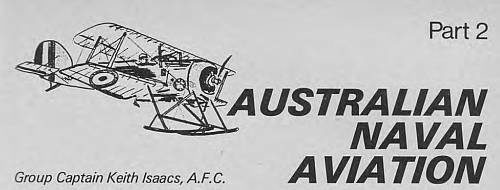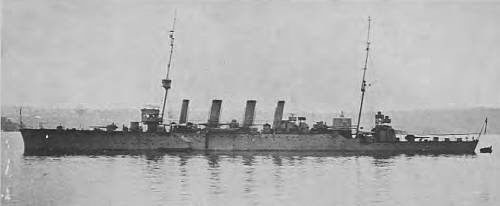- Author
- Issacs, Keith, AFC, ARAeS, Group Captain, RAAF (Retd)
- Subjects
- Naval Aviation
- Tags
-
- RAN Ships
- HMAS Adelaide I, HMAS Brisbane I, HMAS Australia I, HMAS Sydney I, HMAS Melbourne I
- Publication
- December 1973 edition of the Naval Historical Review (all rights reserved)

In this second part of Australian Naval Aviation, Group Captain Isaacs discusses two of the aircraft employed by Australian ships in World War I – the Sopwith Baby Seaplane and the Sopwith Ship’s Pup. His story does not end with the description of the aircraft but describes the operations in which they were involved and the intrepid men who flew them.
Sopwith Baby Seaplane, the Sopwith Tabloid, a special two-seat version which Harry Hawker brought to Australia in 1914, operated in limited numbers with the Royal Naval Air Service. The single-seat Tabloid was developed into the Sopwith Schneider seaplane, which acquired its name after a Tabloid fitted with floats won the second Schneider Cup race on 20 April 1914. Anzac troops saw Schneider single-seaters in action in the Dardanelles in 1915, operating with the Royal Naval Air Service elements, No. 3 Squadron and HMS Ark Royal. Both the Tabloid and the Schneider were each fitted with a 100 horsepower Gnome Monosoupape, but the next version mounted a 110 horsepower Clerget. This seaplane was the single-seat Sopwith Baby, examples of which were also used near Australian troops during the Palestine fighting when they operated from the carrier HMS Empress.
After the first 100 Babies were constructed the Sopwith production was transferred to the Blackburn Company. Seventy of the Blackburn aircraft were fitted with 110 horsepower Clergets, and a second group of 115 with the higher rated 130 horsepower engine. Some of the first 130 horsepower Clerget Babies carried Ranken anti-Zeppelin darts instead of a machine-gun. These 185 licence-built seaplanes became known, unofficially, as Blackburn Babies. The Fairey Hamble Baby Seaplane, fitted with the Fairey Patent Camber Gear, was another development of the Sopwith Baby. The Fairey seaplanes also served alongside the Australians in Egypt in operations from Empress.
The beginning of Australian naval aviation has been generally associated with the flying-off experiments of Sopwith Pups from HMA Ships Sydney and Australia, in December 1917. But six months earlier a brand new cruiser of the Royal Australian Navy had already achieved the distinction of being the first Australian warship to carry an aircraft on operational duties. She was HMAS Brisbane, and the aircraft was a Sopwith Baby Seaplane. Brisbane was laid down at Cockatoo Island Dockyard, Sydney, on 25 January 1913, launched on 30 September 1915, commissioned on 31 October 1916 and completed on 9 December 1916. She was a four funnelled Chatham-class light cruiser of 5,400 tons, similar in design to the British-built Sydney and Melbourne; in 1917 a fourth sister ship, HMAS Adelaide, was also laid down at Cockatoo Island but was not completed until 1922.

At the request of the British Admiralty, Brisbane left Port Jackson on her first mission in December 1916, bound for the Mediterranean. After two months at Malta the cruiser was despatched to the Indian Ocean to search for an unknown enemy searaider. This raider later proved to be SMS Wolf which, with her seaplane ‘Wolfchen’ was bound for Australian waters. By April 1917 Brisbane had positioned at Colombo, where she was joined by the carrier HMS Raven II and the French cruiser Pothuau. Raven II (ex Rabenfels, a former German cargo ship) had been converted to carry aircraft and arrived at Colombo on 2 April with 240- horsepower engined Short 184 seaplanes and one Sopwith Baby Seaplane. This ship and the aircraft were under the control of Commander Samson.
While the ships were coaling, arrangements were made for Raven II to search the Maldive Islands with the Short seaplanes, and the Baby Seaplane was transferred to Brisbane. This particular aircraft, which carried the Royal Naval Air Service serial number N 1014, was one of the first batch built by Blackburn with a 110- horsepower Clerget air-cooled rotary engine; it is believed that a 130-horsepower engine was later installed. The seaplane was carried at the rear of Brisbane and was lowered overboard where it would take off from the sea and, after landing, would be hoisted inboard again by means of a derrick crane. Although the search was fruitless the Sopwith Baby operated successfully from Brisbane, making two flights daily for some weeks, piloted by Flying Officer A.W. Clemson, who later became a Flight Commander and was awarded the DSC.




